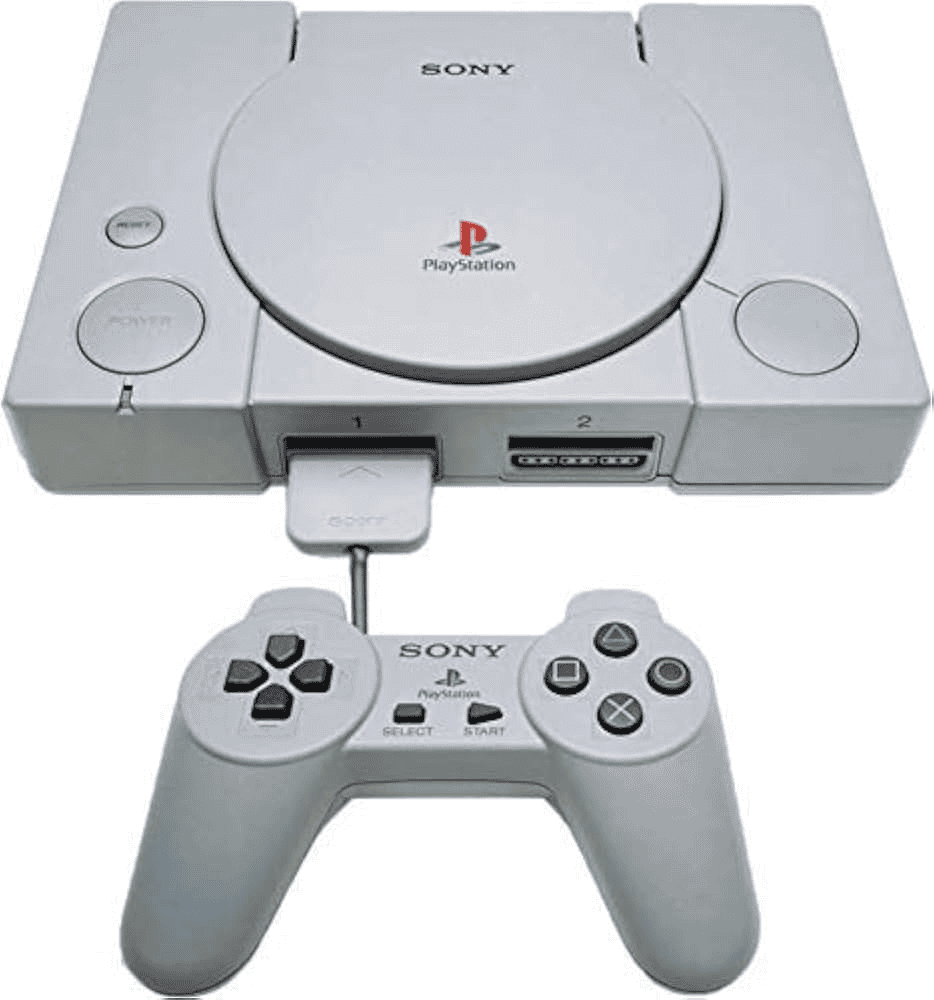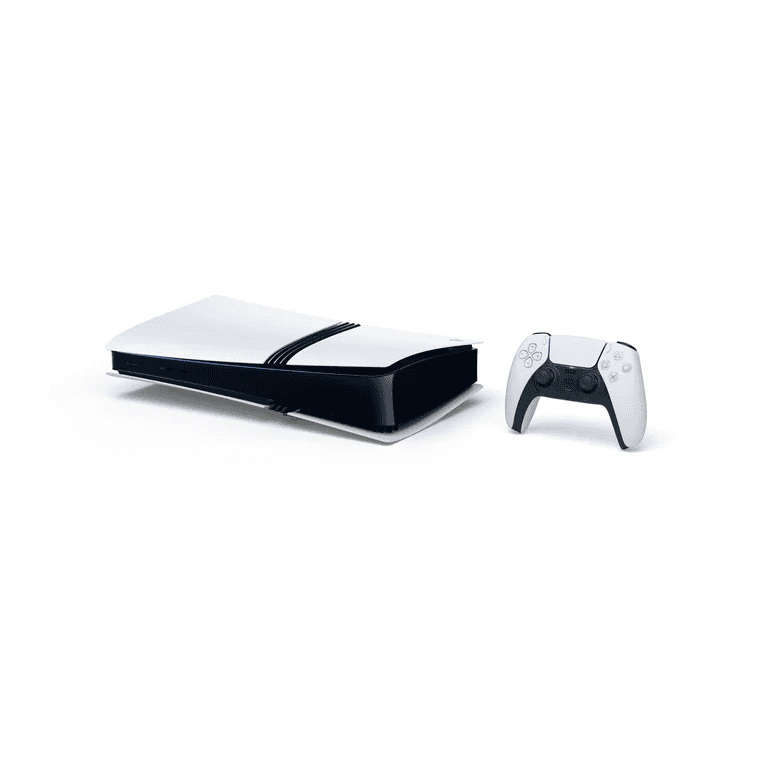PlayStation consoles have revolutionized gaming since 1994. Sony’s innovative hardware has pushed boundaries and set new standards for immersive experiences. From the original PlayStation to the upcoming PS5 Pro, each generation has brought significant improvements in graphics, processing power, and features.
The PlayStation family spans multiple iterations, each more powerful than the last. The PlayStation 5 Pro, rumored for release in November 2024, promises to elevate gaming even further. It will likely offer enhanced performance and cutting-edge technologies like improved ray tracing and higher frame rates.
Sony’s commitment to innovation has kept PlayStation at the forefront of console gaming. The PlayStation 5 introduced features like near-instant loading times and haptic feedback, setting new benchmarks for the industry. As technology advances, future PlayStation consoles will continue to push the boundaries of what’s possible in interactive entertainment.
PlayStation Through the Years: A Console Evolution (1994-2024)
From its groundbreaking debut in 1994 to the cutting-edge technology of today, the PlayStation has been a driving force in the gaming world. Let’s take a journey through time and explore the complete evolution of every PlayStation console, including those powerful Pro versions.
1. PlayStation (PS1) – 1994

The original PlayStation revolutionized gaming with its 3D graphics and CD-ROM technology. It introduced iconic franchises like Final Fantasy VII, Metal Gear Solid, and Gran Turismo, forever changing the gaming landscape.
- Key Features: CD-ROM drive, PlayStation Link Cable for multiplayer, memory cards for saving games.
- Iconic Games: Final Fantasy VII, Tekken 3, Resident Evil 2, Gran Turismo, Metal Gear Solid.
2. PS One – 2000

A smaller, redesigned version of the original PlayStation, the PS One continued the console’s success with a more compact and affordable package.
- Key Features: Smaller and lighter design than the original PS1.
3. PlayStation 2 (PS2) – 2000

The best-selling console of all time, the PS2 dominated the sixth generation of consoles with its DVD playback capabilities and a massive library of games.
- Key Features: DVD playback, backwards compatibility with PS1 games, online gaming capabilities (with the PlayStation Network Adapter).
- Iconic Games: Grand Theft Auto: San Andreas, Metal Gear Solid 3: Snake Eater, Shadow of the Colossus, Final Fantasy X.
4. PlayStation 2 Slim – 2004

A slimmer and lighter redesign of the PS2, making it even more popular with consumers.
- Key Features: Smaller and lighter design, built-in Ethernet port.
5. PlayStation Portable (PSP) – 2004

Sony’s first foray into handheld gaming, the PSP offered console-quality gaming on the go with its impressive graphics and multimedia capabilities.
- Key Features: 5-inch LCD screen, UMD discs for games and movies, Wi-Fi connectivity.
- Iconic Games: Grand Theft Auto: Liberty City Stories, Metal Gear Solid: Peace Walker, God of War: Chains of Olympus.
6. PlayStation 3 (PS3) – 2006

The PS3 introduced Blu-ray technology and powerful hardware, but faced stiff competition from the Xbox 360 and Wii.
- Key Features: Blu-ray Disc drive, Cell processor, PlayStation Network for online gaming and media services.
- Iconic Games: The Last of Us, Uncharted 2: Among Thieves, Grand Theft Auto V, Metal Gear Solid 4: Guns of the Patriots.
7. PlayStation 3 Slim – 2009

A smaller and more energy-efficient version of the PS3, with a redesigned case and a larger hard drive.
- Key Features: Smaller and lighter design, quieter operation, larger hard drive options.
8. PlayStation Vita – 2011
The successor to the PSP, the PS Vita boasted impressive graphics and dual analog sticks, but struggled to gain mainstream popularity.
- Key Features: 5-inch OLED touchscreen, dual analog sticks, rear touchpad, front and rear cameras.
- Iconic Games: Gravity Rush, Persona 4 Golden, Uncharted: Golden Abyss.
9. PlayStation 3 Super Slim – 2012
The final iteration of the PS3, featuring a sliding disc cover and an even smaller and lighter design.
- Key Features: Even smaller and lighter, sliding disc cover, larger hard drive options.
10. PlayStation 4 (PS4) – 2013

A return to form for Sony, the PS4 dominated the eighth generation of consoles with its powerful hardware, strong game library, and focus on social features.
- Key Features: AMD Jaguar CPU and Radeon GPU, 8GB GDDR5 RAM, DualShock 4 controller with touchpad and Share button, PlayStation Network with social features.
- Iconic Games: Marvel’s Spider-Man, God of War (2018), Horizon Zero Dawn, Uncharted 4: A Thief’s End.
11. PlayStation 4 Slim – 2016
A slimmer and more energy-efficient version of the PS4, with a slightly updated design.
- Key Features: Smaller and lighter design, more energy efficient, updated DualShock 4 controller.
12. PlayStation 4 Pro – 2016
A mid-generation upgrade to the PS4, offering improved performance and support for 4K resolution gaming.
- Key Features: Enhanced AMD Jaguar CPU and Radeon GPU, 8GB GDDR5 RAM, support for 4K resolution and HDR gaming.
13. PlayStation 5 (PS5) – 2020

Sony’s latest console, the PS5 boasts cutting-edge technology, including an ultra-fast SSD, powerful custom CPU and GPU, and support for ray tracing and 8K resolution.
- Key Features: Custom AMD Zen 2 CPU and RDNA 2 GPU, 16GB GDDR6 RAM, 825GB custom SSD, DualSense controller with haptic feedback and adaptive triggers.
- Iconic Games (so far): Marvel’s Spider-Man: Miles Morales, Ratchet & Clank: Rift Apart, Horizon Forbidden West, Returnal.
14. PlayStation 5 Slim – 2023

A smaller and lighter version of the PS5, with a detachable disc drive.
- Key Features: Smaller and lighter design, detachable disc drive for a more compact option.
15. PlayStation 5 Pro – 2024

The most powerful PlayStation yet, the PS5 Pro offers even better performance, improved visuals, and enhanced support for higher resolutions and frame rates.
- Key Features: Further enhanced CPU and GPU, potentially more RAM, improved support for 4K and 8K gaming with higher frame rates.
From the original PlayStation to the PS5 Pro, Sony’s consoles have consistently pushed the boundaries of gaming technology. Each generation has brought new innovations and experiences, shaping the way we play and enjoy video games. With the PS5 and its future iterations, the PlayStation legacy is sure to continue for many years to come.
Key Takeaways
- PlayStation consoles have evolved significantly since 1994, with each generation offering substantial improvements.
- The PS5 Pro is expected to deliver enhanced performance and advanced features like improved ray tracing.
- Sony’s ongoing innovation ensures PlayStation remains a leader in the gaming industry.
Evolution of PlayStation Consoles
Sony’s PlayStation consoles have transformed gaming over the past three decades. Each generation has introduced new technologies and capabilities, pushing the boundaries of interactive entertainment.
The Birth of PlayStation
Sony entered the video game market with the original PlayStation in 1994. This 32-bit console revolutionized 3D gaming with titles like Final Fantasy VII and Metal Gear Solid. The PlayStation used CD-ROMs, offering larger storage capacity than cartridges.
It quickly became popular, selling over 100 million units worldwide. The console’s success established Sony as a major player in the gaming industry.
Entering the New Millennium: PlayStation 2 and PSP
The PlayStation 2 launched in 2000, becoming the best-selling console of all time. It featured improved graphics, DVD playback, and a vast library of games.
Sony expanded into handheld gaming with the PlayStation Portable (PSP) in 2004. The PSP offered console-quality graphics on the go and introduced UMD discs for games and movies.
Both systems showcased Sony’s commitment to innovation and multimedia capabilities.
The HD Era: PlayStation 3 and PS Vita
PlayStation 3 arrived in 2006, bringing high-definition gaming and Blu-ray playback. It faced initial challenges due to its high price but eventually found success with exclusive titles and improved hardware revisions.
The PS Vita, released in 2011, succeeded the PSP. It featured a touchscreen, dual analog sticks, and powerful hardware for mobile gaming. Despite impressive technology, it struggled to match the PSP’s popularity.
Perfecting the Experience: PlayStation 4 and Pro
PlayStation 4 launched in 2013, focusing on social features and ease of use for developers. Its powerful hardware and strong lineup of exclusive games helped it outsell competitors.
Sony introduced the PS4 Pro in 2016, offering 4K resolution and improved performance for compatible games. This mid-generation upgrade set a new trend in console lifecycles.
The PS4 family has sold over 100 million units, cementing Sony’s dominance in the console market.
Cutting-Edge Gaming: PlayStation 5, Slim, and Pro
PlayStation 5 debuted in 2020, featuring ultra-fast SSD storage and ray-tracing capabilities. It offers near-instant loading times and more immersive gameplay through its DualSense controller.
A slimmer PS5 model arrived in 2023, providing the same performance in a more compact design. Looking ahead, Sony announced the PS5 Pro for November 2024, promising enhanced graphics and performance for demanding gamers.
These latest iterations showcase Sony’s continued innovation in the gaming space.
Technological Advancements and Performance
PlayStation consoles have seen remarkable technological progress over the years. These advancements have transformed gaming experiences, pushing the boundaries of graphics, speed, and interactivity.
The Core of Gaming: CPU and GPU
The heart of each PlayStation lies in its CPU and GPU. The original PlayStation used a 32-bit RISC CPU, while the PS5 boasts a custom 8-core AMD Zen 2 CPU. This leap allows for complex game worlds and faster load times.
GPUs have evolved even more dramatically. The PS5’s custom RDNA 2 GPU can handle 4K resolution and ray tracing, creating lifelike lighting effects. This is a far cry from the PS1’s basic 3D capabilities.
Each console generation has roughly doubled its processing power. The PS4 Pro introduced mid-generation upgrades, offering enhanced performance for 4K TVs.
Enhancing Realism: RAM and Ray Tracing
RAM increases have been crucial for more detailed game worlds. The PS1 had 2MB of RAM. The PS5 has 16GB of GDDR6 RAM, enabling vast open worlds and seamless gameplay.
Ray tracing, introduced in the PS5, simulates light behavior in real-time. This creates more realistic reflections, shadows, and lighting. It’s a significant step towards photorealistic graphics in games.
The PS4 Pro first brought HDR support to the PlayStation line. This technology produces more vibrant colors and deeper contrasts, enhancing visual fidelity.
Beyond Gaming: Multimedia and Storage Solutions
PlayStation consoles have evolved into multimedia powerhouses. The PS2 introduced DVD playback, while the PS3 brought Blu-ray to many homes. The PS5 supports 4K Blu-ray discs, cementing its place in home entertainment setups.
Storage solutions have seen dramatic improvements. Early PlayStations used memory cards for game saves. Modern consoles feature built-in SSDs. The PS5’s custom SSD offers nearly instant load times and enables new game design possibilities.
The PS5 allows for storage expansion with compatible 2TB SSDs, giving players ample space for their game libraries.
The Future of Interactivity: DualSense and VR
The DualSense controller for PS5 represents a leap in haptic feedback. It offers variable trigger resistance and more nuanced vibrations, increasing immersion in games.
PlayStation VR, introduced for PS4, brought virtual reality to console gaming. The upcoming PSVR2 for PS5 promises higher resolution, improved tracking, and new controllers for even more immersive experiences.
These innovations show Sony’s commitment to pushing gaming boundaries. From enhanced graphics to new ways of interacting with games, PlayStation continues to shape the future of interactive entertainment.





